Read on to discover autumn and winter garden ideas, winter garden maintenance tips, what to plant in autumn and winter and more.
What’s included in a new garden
A new home means a new garden that’s a blank slate ready for your own design. Just like inside your home, you can explore the options and upgrades available for your garden. You may want to choose the finish of the paving, perhaps extending the paving or having turf laid.
Adding an outside tap is a convenient alternative to running a hose from the kitchen, or you could add a water butt to collect rainwater to utilise in the garden.
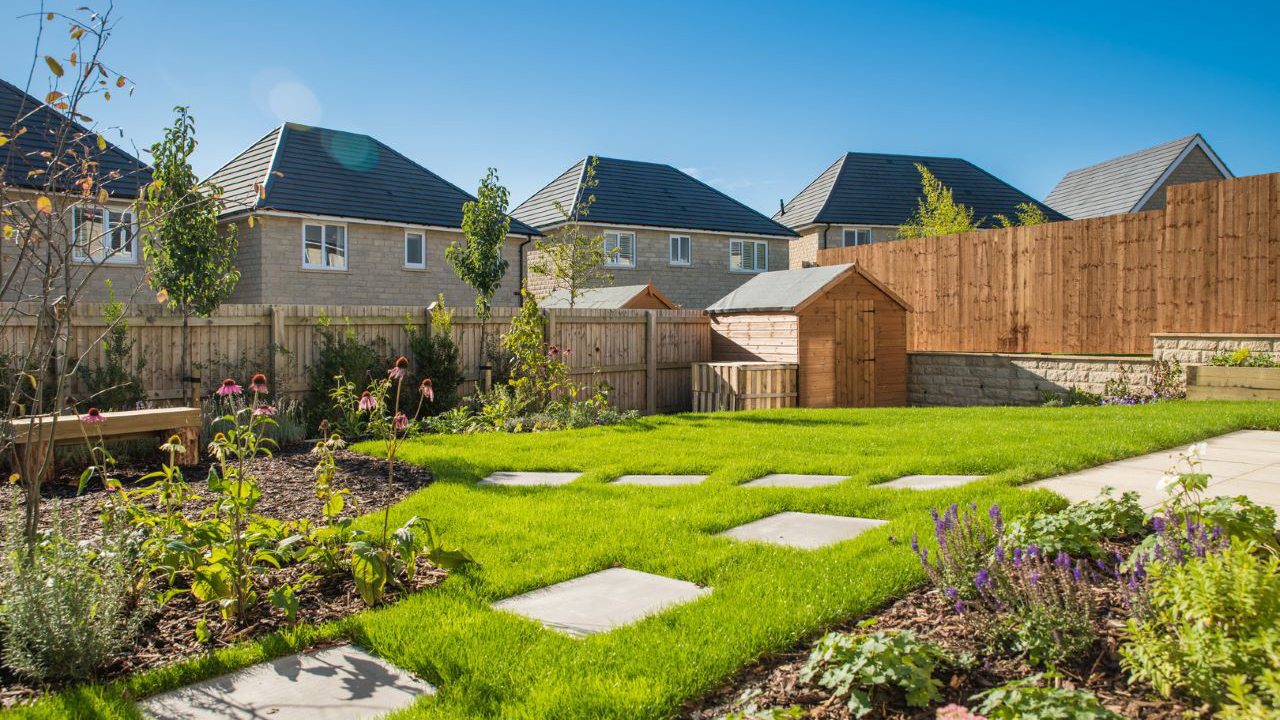
Lighting can also be added, helping you make the most of your outdoor space into the evenings.
Find out what's included in a new Redrow house.
3 things to do in the garden in autumn
Preparing for the changing seasons will help your garden flourish all year round. Carry out these autumn garden jobs to ensure your new garden is winter-ready.
- Autumn gardening jobs should include pruning hedges, bushes and shrubs. Maintenance trimming of hedges can be done just once a year. It’s important to wait until after nesting season, which usually runs until August.
- Wait until all the leaves have fallen from trees before raking. Don’t rake leaves immediately after it’s rained as they’ll be heavy and difficult to handle. Wait until they’re damp and add them to your compost.
- Keep on top of gardening tasks in autumn and into winter, then as spring approaches, you’ll simply need to spring clean the garden by weeding and tidying up. We’ve put together a spring cleaning checklist as part of our storage hacks and cleaning tips by room guide.
3 garden maintenance jobs for autumn and winter
- Put away any garden furniture that won’t be used during the colder months. This could simply mean adding a waterproof cover or removing any soft furnishings and stowing them away until the warmer weather returns.
- Clear the patio or decking of any fallen leaves, perhaps using a leaf blower. As before, the leaves can be added to your compost bin. Once cleared, pressure wash your patio or decking to remove any marks left behind by organic materials or the furniture you’ve moved.
- Check your tools for any damage and make repairs as required, perhaps tightening the handle on a spade or sharpening secateurs. They’ll then be ready for use in the spring and if they need replacing, you’ll have plenty of time to buy new garden tools.
3 ways to prepare your garden for autumn
- Safeguard against potential damage to pipes during the colder months by isolating and covering your outside tap. Watch this handy video about caring for your taps in winter.
- Dig ground that will be bare over winter. It’s best to cultivate clay soil in autumn so the frost then breaks up the soil during the winter, improving its structure. Light, sandy soils can also be dug, providing it’s not waterlogged or frozen. Although this type of soil is best dug in spring.
- Treat your garden with some of the compost you’ve collected over the year and add some mulch on top to improve garden soil over the winter. Turn the remaining compost before adding your garden waste to the pile.
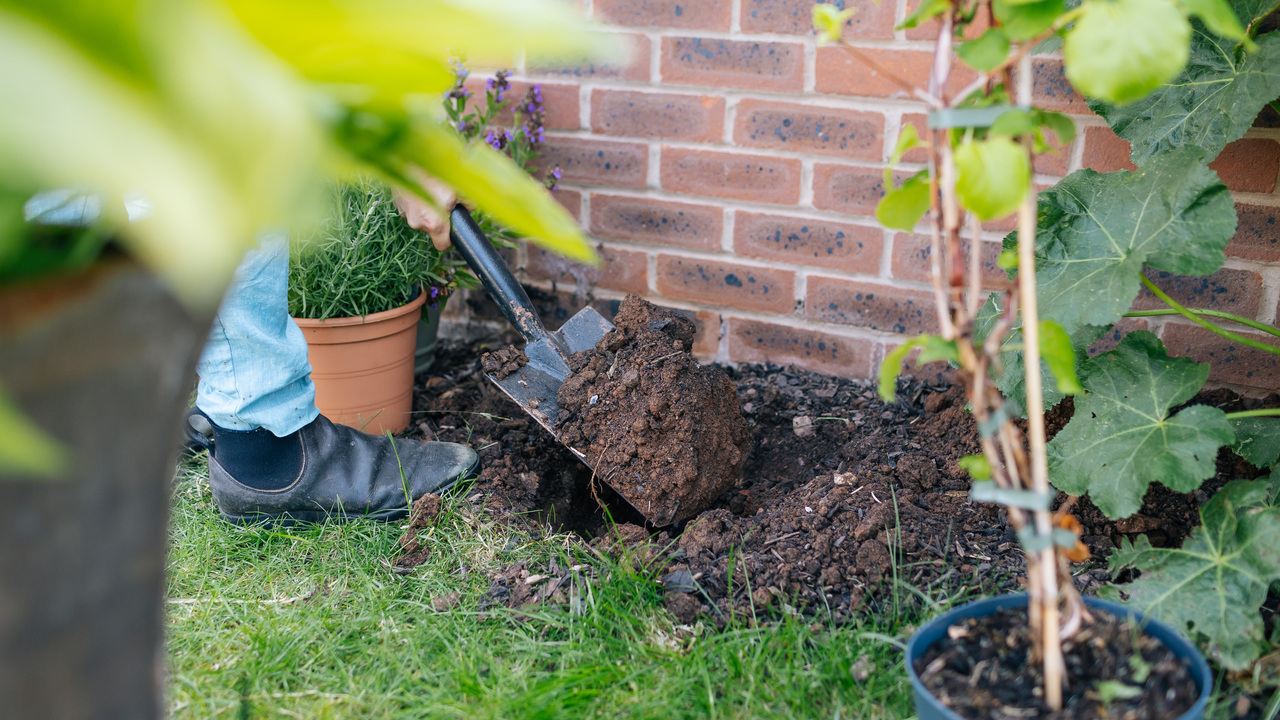
How to look after your lawn in autumn and winter in 6 steps
- Continue mowing your lawn until September but leave the grass slightly longer on the final cut.
- Scarify your lawn by raking up any dead grass. Rake any fallen leaves into the border for natural insulation against frost.
- Top dress your lawn with compost, soil or sand.
- If you’re reseeding all or part of your lawn, this can be mixed into the top dressing to save time.
- Adding a lawn feed will help prepare and protect your lawn ahead of the cold winter months.
- If you’re wondering, can you lay turf in winter, the answer is yes, providing the ground isn’t frozen. This will help the roots settle in time for spring.
4 ideas of what to plant in autumn
- Bulbs to plant in autumn are ones you want to flower in spring. You can also transplant existing plants. Gardener and writer Arthur Parkinson’s autumn gardening tips include planting hardy perennials (plants that return year on year). He explained: “With proper care the plant will grow exponentially. Perennials that give the sought-after ‘cottage garden’ look include bearded iris, hellebores and echinops.”
- Autumn planting plans could include putting in attractive winter flowers and evergreen shrubs will keep your garden busy during autumn and fend off that stark empty winter look.
- An autumn garden job could be to give hanging baskets a seasonal refresh with autumn plants such as cyclamens, heather, pansies, primroses and violas, which can all withstand the colder weather. These ideal autumn plants for hanging baskets will add a splash of colour to the entrance to your home.
- Options for autumn flowering plants include liriope muscari (also known as lilyturf or blue lilyturf,) asters and Japanese anemones.

Click here to discover what to plant when and how to help ensure your outside space looks blooming lovely all-year round with our guide to four season gardening.
How to make the most of your garden in autumn and winter
- Add outdoor lights to prolong the time you can spend in the garden in the evenings.
- A fire pit or chiminea can help keep you warm when the sun’s gone down. Add to the cosy ambience with some garden blankets or throws.
- Cook alfresco with a barbecue, smoker or pizza oven. You can always go inside to eat if you’re feeling the chill. Our homes are designed so that the garden is an extension of your living space.
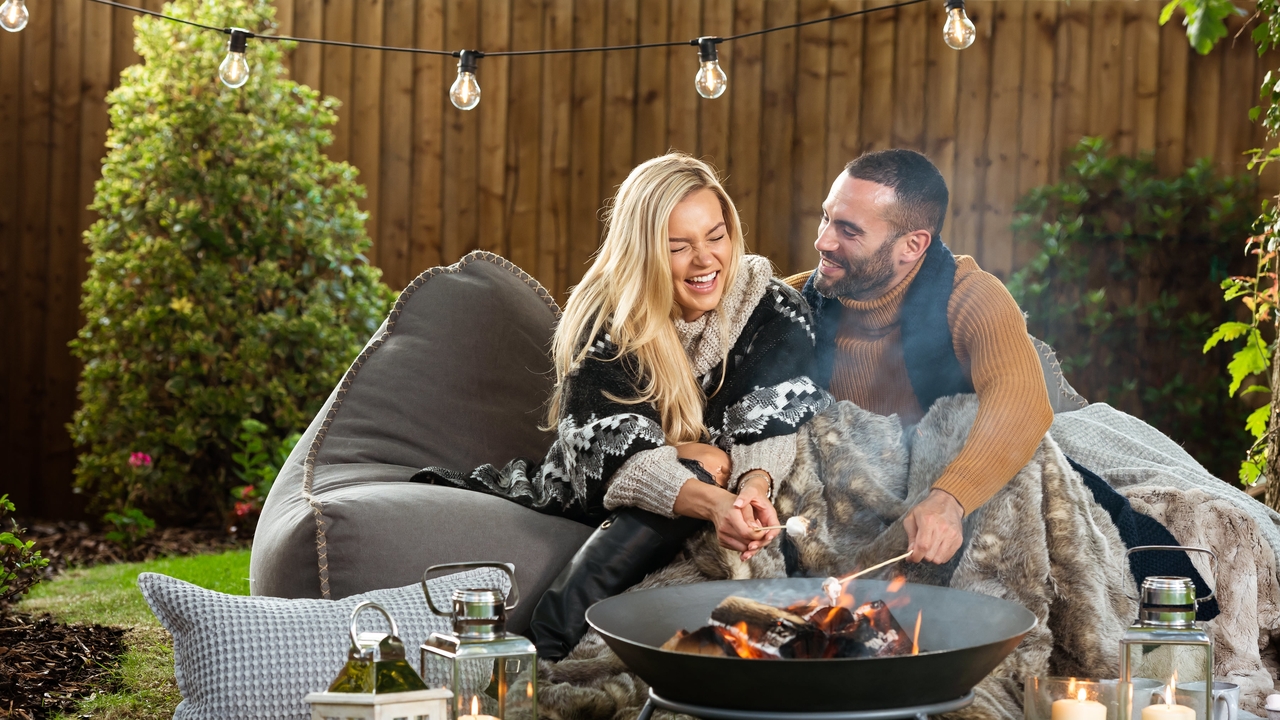
How to prepare your garden for winter
Winter garden maintenance should include protecting plants from frost as this is crucial in winter. Easy ways to do this include:
- Moving pots into a more sheltered area of the garden or into a greenhouse.
- Reduce household waste by reusing old newspaper as a crop cover by laying it over plants when frost is forecast. Alternatively, you could use bracken, straw, hessian or fleece to insulate plants.
These should be removed during milder spells to prevent sweating and rotting.
Choose a new Redrow home and you won’t have to worry about keeping warm this winter as our Eco Now homes and our “zero carbon ready” Eco Electric homes are among the most efficient available. You could enjoy further savings with our top tips to beat your energy bills.
What do gardeners do in the winter?
- Cut back the main upright of deciduous trees and shrubs from November to March. Evergreens should be pruned after flowering and not during autumn or winter as this could potentially damage them.
- Carry out light weeding of your garden throughout the winter as this will help save time in spring.
- Maintain tools and sort seeds ready for sowing from January to March. Milk cartons and plastic fruit and vegetable containers can be repurposed for sowing seeds.
What to plant in winter
- Winter gardening plans could include sowing Perennials such as delphiniums, foxgloves and geraniums, while annuals for winter sowing include marigolds, pansies and snapdragons. Winter-flowering plants such as winter clematis and winter honeysuckle are perfect for adding a splash of colour to the garden in the coldest, darkest months.
- A hanging basket with winter berries is a great way of adding colour to your outdoor space, while also providing a source of food for birds and squirrels. Some winter gardening tips include festive favourites holly and mistletoe are easy to grow winter berries, along with boxberry, snowberry, skimmia and viburnum.
- Grow your own herbs to add flavour to your food and to support pollinators. “Rosemary, marjoram, lavender, mint or sage are great choices for busy gardeners who wish to offer nectar-rich plants to their local wildlife,” Arthur added.

How to welcome wildlife into your garden
In the autumn some of the wildlife we see in our gardens, including hedgehogs, dormice and bats, are preparing for winter hibernation by fattening themselves up. Species that don’t hibernate such as birds and squirrels, will be seeking much-needed food in readiness for winter when food is naturally scarce.
- Set up feeding stations for birds, squirrels and other animals. Remember to refill to help them refuel over the winter months when food is likely to be scarce.
- Stop water features or ponds in your garden from freezing, to welcome amphibious friends like frogs and newts. When the leaves start falling from the trees you’ll need to scoop them out of the pond to prevent them from sinking and rotting.
- Make a woodpile in a shady or corner that will stay cool and damp. This will help provide a habitat for mosses, lichens and fungi, as well as many insects. In turn, this will support other wildlife such as birds who will feed on insects living in the old wood.
- Build a bug hotel using some drilled logs or cane sticks. Children will have fun helping with the build and then watching the minibeasts settling into their new home.
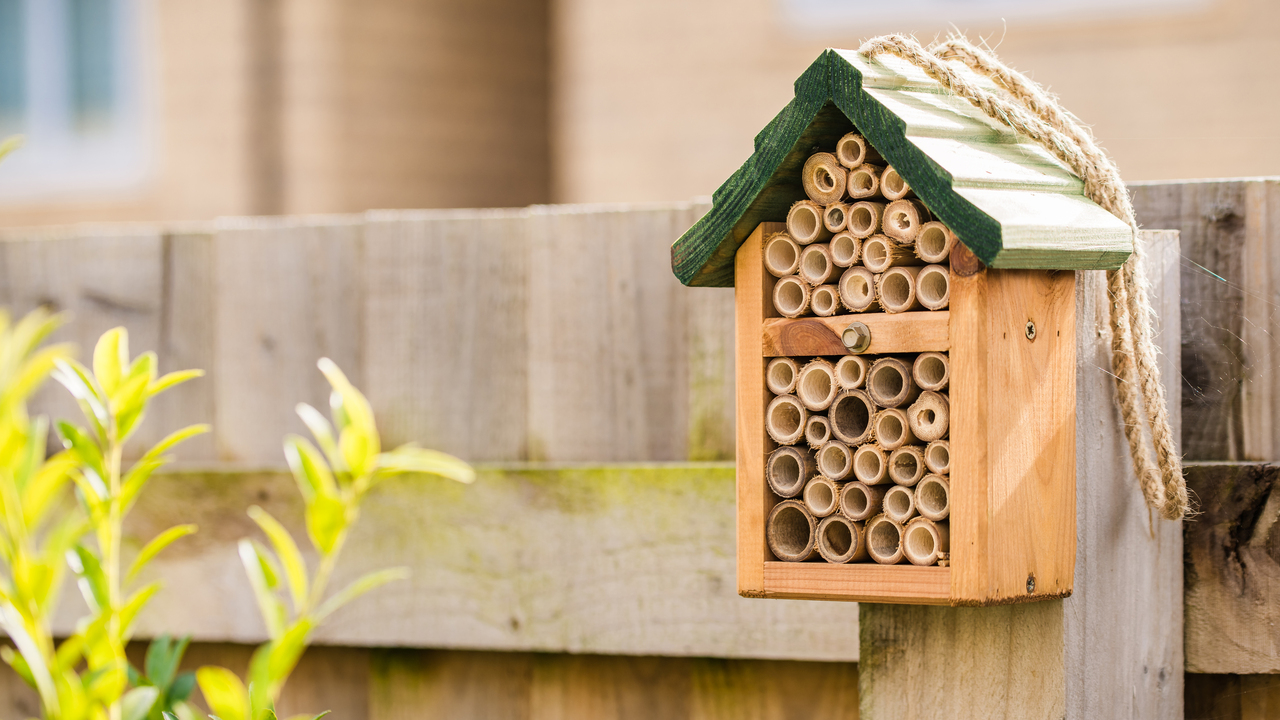
Sustainable gardening ideas
- Say no to pesticides and herbicides and use organic alternatives to weed killers. Arthur recommends using household vinegar. “It’s far less aggressive and does the job without damaging the biodiversity in your garden,” Arthur explained.
- For a low maintenance option, say no to the mow. Cutting back on how often you cut your lawn will encourage wildflowers to grow, helping wildlife.
- Be mindful that wildlife prefers dark gardens at night. Arthur said: “Excess light can be harmful to insects. So have your garden lighting on dimmers or timers so that your garden can properly go to sleep.”
- Grow your own herbs, vegetables and fruit in a kitchen garden, helping reduce food miles as part of a sustainable lifestyle. You’ll be able to use your harvest in hearty home cooked meals and could swap surplus crops with your new neighbours. Children are likely to be more inclined to try new foods if they’ve helped grow them. Check out the top kitchen design trends.
Read our top tips for a sustainable home.
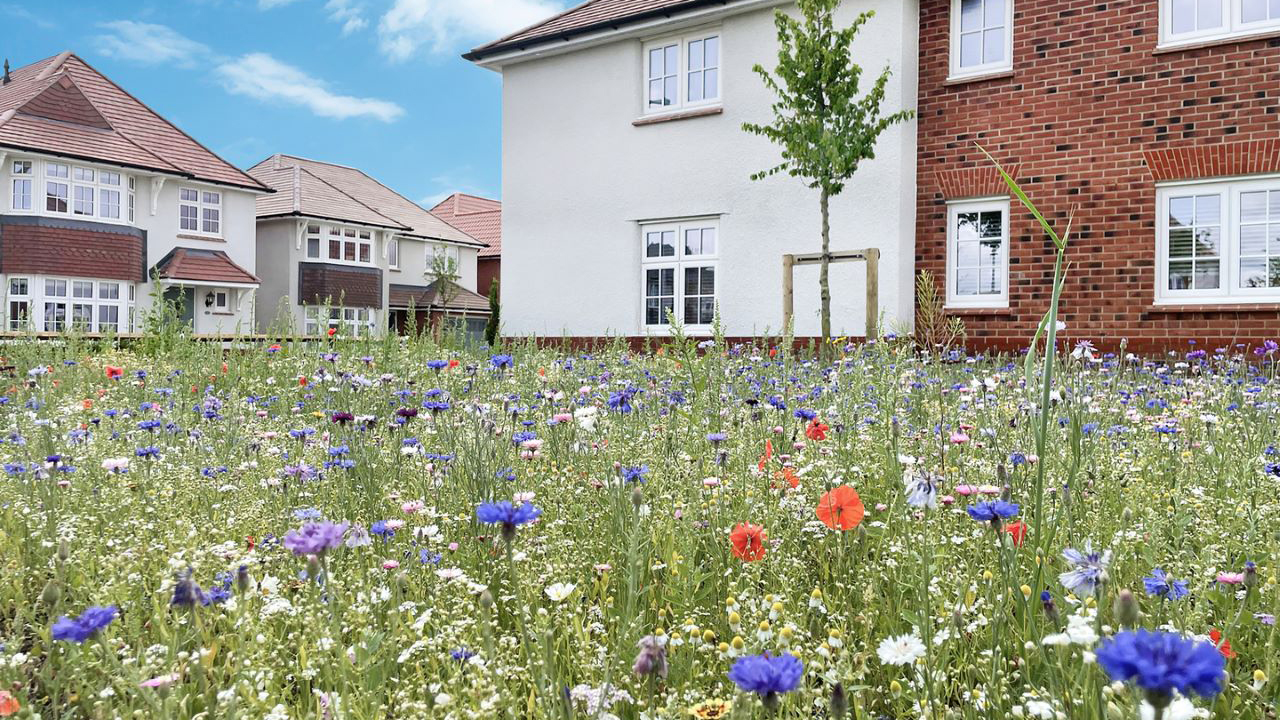
We’ve also put together a list of 10 garden space ideas to help you make the most of your outside space all year round.
If you're still looking for your dream home, find a Redrow development near you today.



